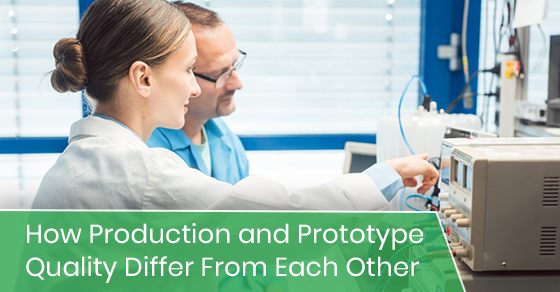How Production and Prototype Quality Differ From Each Other
Electronics circuit board design has had a clear evolution. First, a design is fabricated on a state-of-the-art breadboard. This is in order to evaluate its functionality. Afterwards, a board layout will be subsequently made and placed into the prototype production phase. However, there have been recent changes in the industry that should be noted.
For instance, in the past, single and dual-layer boards were the norm, but today four and six-layer boards have become the standard in the industry. The size of these layered boards has also shrunk dramatically. The density of modern layer boards has also grown dramatically in the last few years. Here, we will discuss how production and prototype quality differ from each other and how you can bridge the gap, in terms of quality, between the two elements.
What Happens Once Design is Proven
Once the design has been proven, it will then enter the mass production phase. This is where hundreds of thousands, if not millions, of these circuits, are at a very high velocity and meticulous accuracy as well.
However, in some cases, the company may want to prove their design and concept before mass production can commence. In such a case, the company would need to determine who will fabricate their boards on their behalf.
The majority of today’s production companies simply do not have the know-how or resources required to produce one to ten economical prototypes. They need to find cost-effective solutions to do this, as the labour required to set up and breakdown a quantity of one, or even a thousand, is the very same in terms of the intensity of the labour involved.
How to Solve the Costly Prototyping Issue
The solution is actually quite simple. The cost-effectiveness conundrum involved in prototyping can be rectified by fabricating the prototype in-house. To illustrate, imagine your company needs to make some modifications to the design of the product. If you had a lab at your company HQ, then you would be able to make changes on the fly and save money by keeping production in-house instead of having to outsource.
However, there are still the issues of board density layout and component size that need to be remedied. They can be quite the hindrance as far as the manual assembly is concerned. It should also be mentioned that in the past, controlled and accurate equipment was used primarily by OEM and EMS companies. These companies used automated place-and-pick equipment, state-of-the-art reflow ovens, powerful chip shooters, expensive paste stencils, and top-of-the-line solder paste printers.
You may be wondering how to fabricate your prototypes without the budget and space that large production equipment has; not to mention the expertise and training needed to operate the different types of machinery involved. Unfortunately, it is here that we notice a division that keeps many designers in the dark ages, whereby the designer is limited to tweezers, a magnifying glass, and rudimentary soldering iron to try and get the work done.
Changing Times
There are a few equipment options available on the market that are specifically designed and developed with engineers in mind.
By using these cutting edge tools, prototype designers will be able to manufacture their components with a remarkable level of accuracy effectively. This is because modern printing equipment is light years ahead of the archaic machinery that companies were limited by in the 90s and early 2000s.
Companies can now opt for a leading-edge desktop solder paste printer that boasts a very minute machine footprint. These printers are also known for being very user-friendly, with setup usually only taking a few minutes, and they also provide very high accuracy readings. What's more, the owners of these innovative desktop solder paste printers will no longer have to worry about egregiously overpriced paste stencils going forward.
Another popular tool that is currently available on the market is the manual pick and place machine. There are many different brands to choose from. You can use a manual pick and place machine to place fine pitch components and micro-SMDs with excellent precision. In fact, the camera-assisted placement technology will also eliminate eye strain going forward.
Another issue that many companies worry about is thermal shock. However, thermal shock can quickly become an issue of the past thanks to benchtop reflow ovens. They are designed to provide surface temperature monitoring and accurate temperature profile control in order to prevent thermal shock destruction.
In sum, there are many resources currently available to engineers so that they can build prototypes that will look and perform similarly to finished production boards; essentially eliminating the gap in quality between the two elements.
To learn more about how production and prototype quality differ from each other, call Circuits Central at 888-821-7746 or contact us here.

